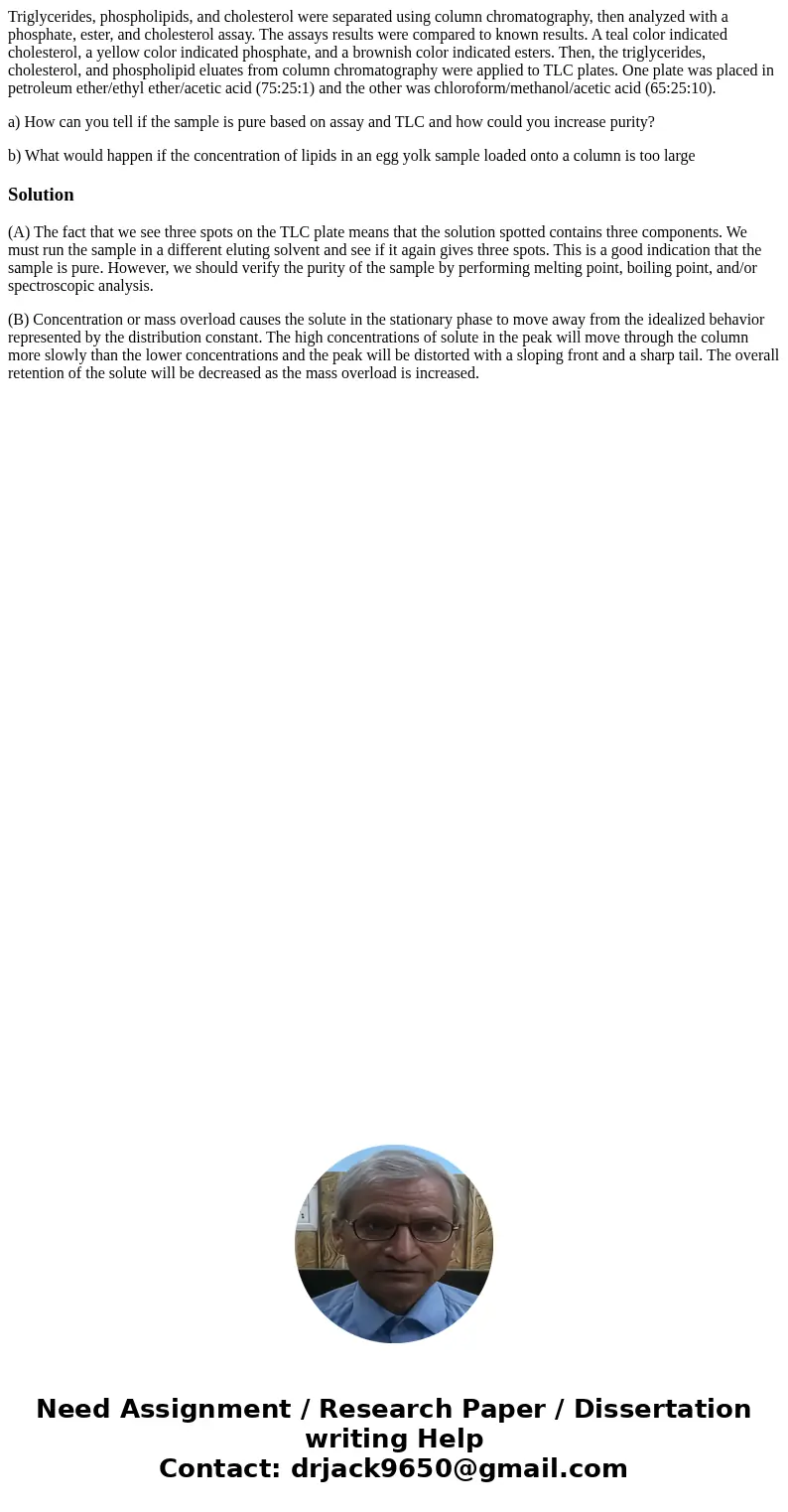Triglycerides phospholipids and cholesterol were separated u
Triglycerides, phospholipids, and cholesterol were separated using column chromatography, then analyzed with a phosphate, ester, and cholesterol assay. The assays results were compared to known results. A teal color indicated cholesterol, a yellow color indicated phosphate, and a brownish color indicated esters. Then, the triglycerides, cholesterol, and phospholipid eluates from column chromatography were applied to TLC plates. One plate was placed in petroleum ether/ethyl ether/acetic acid (75:25:1) and the other was chloroform/methanol/acetic acid (65:25:10).
a) How can you tell if the sample is pure based on assay and TLC and how could you increase purity?
b) What would happen if the concentration of lipids in an egg yolk sample loaded onto a column is too large
Solution
(A) The fact that we see three spots on the TLC plate means that the solution spotted contains three components. We must run the sample in a different eluting solvent and see if it again gives three spots. This is a good indication that the sample is pure. However, we should verify the purity of the sample by performing melting point, boiling point, and/or spectroscopic analysis.
(B) Concentration or mass overload causes the solute in the stationary phase to move away from the idealized behavior represented by the distribution constant. The high concentrations of solute in the peak will move through the column more slowly than the lower concentrations and the peak will be distorted with a sloping front and a sharp tail. The overall retention of the solute will be decreased as the mass overload is increased.

 Homework Sourse
Homework Sourse